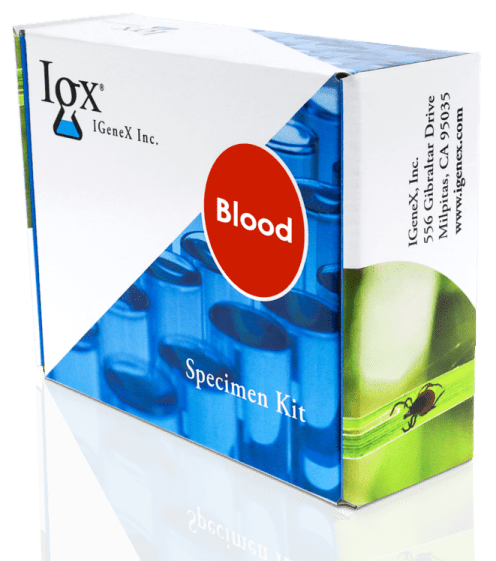Tick Testing
If you’ve been bitten, or suspect you may have been, you can send IGeneX the tick to test and determine if the tick is carrying the pathogens that can lead to tick-borne illnesses: Borrelia burgdorferi (Lyme Disease), Tick-Borne Relapsing Fever (TBRF) (including B. miyamotoi), Babesiosis, Anaplasmosis, Ehrlichiosis, Bartonellosis, and Rickettsiosis. The tick does not need to be fully intact to be sent in for testing. Fill out the Tick Test Request Form to send a tick for testing.
HOW TICK TESTING WORKS
Here’s what to expect when you send a tick in to be tested for Lyme and other tick borne diseases:
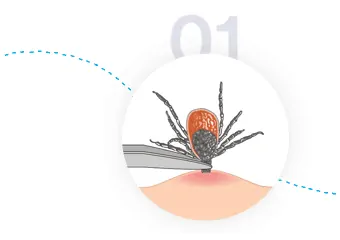
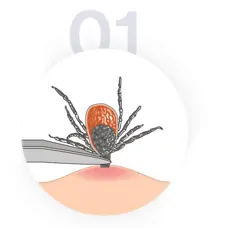
Remove Tick
Ticks can be alive or dead for PCR testing.
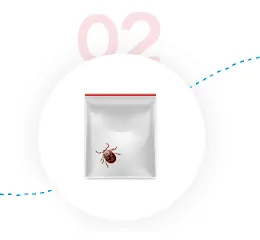
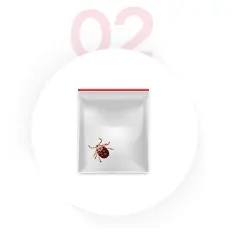
Enclose Tick
Place the tick in a small plastic tube or sealed plastic bag and enclose it in an envelope.



Mail Tick
Mail the tick to IGeneX. Results will be processed in 10 business days.
HOW TO REMOVE A TICK
Step 1
Use fine-tipped tweezers to grasp the tick as close to the skin’s surface as possible.
Step 4
Ship the tick to IGeneX for testing. If disposing the tick, never crush it with your fingers. Dispose of a live tick by putting it in alcohol, placing it in a sealed bag/container, wrapping it tightly in tape, or flushing it down the toilet. (For more, see What to do After You Have Been Bitten by a Tick )
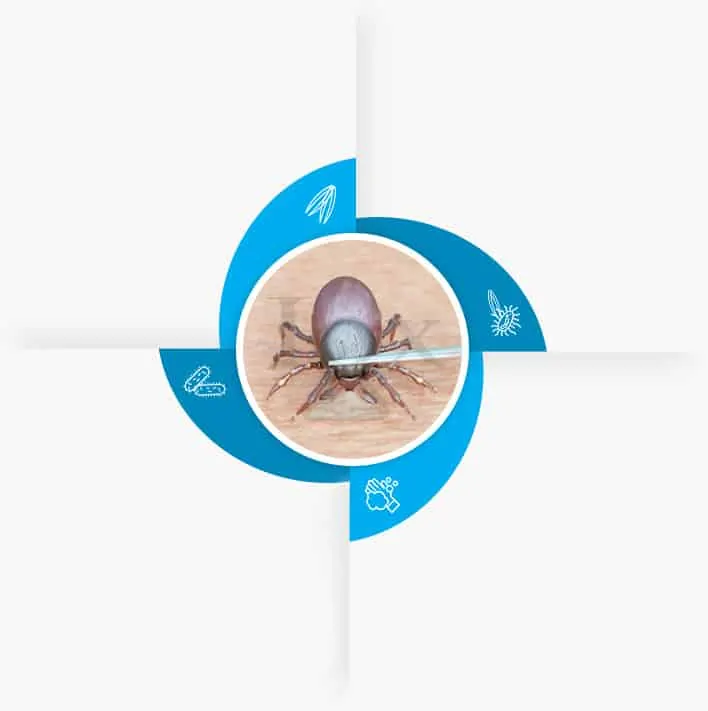
Step 2
Pull upward with steady, even pressure. Don’t twist or jerk the tick; this can cause the mouth-parts to break off and remain in the skin. If this happens, remove the mouth-parts with tweezers. If you are unable to remove the mouth easily with clean tweezers, leave it alone and let the skin heal.
Step 3
After removing the tick, place it in a plastic tube or bag. Thoroughly clean the bite area and your hands with rubbing alcohol or soap and water.
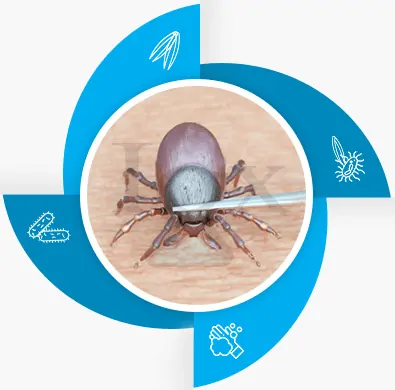
HOW TO REMOVE A TICK
Step 1
Use fine-tipped tweezers to grasp the tick as close to the skin’s surface as possible.
Step 2
Pull upward with steady, even pressure. Don’t twist or jerk the tick; this can cause the mouth-parts to break off and remain in the skin. If this happens, remove the mouth-parts with tweezers. If you are unable to remove the mouth easily with clean tweezers, leave it alone and let the skin heal.
Step 3
After removing the tick, place it in a plastic tube or bag. Thoroughly clean the bite area and your hands with rubbing alcohol or soap and water.
Step 4
Ship the tick to IGeneX for testing. If disposing the tick, never crush it with your fingers. Dispose of a live tick by putting it in alcohol, placing it in a sealed bag/container, wrapping it tightly in tape, or flushing it down the toilet.
KNOW YOUR TICKS
These days, ticks are more than just an annoyance. One bite can make you sick, even change your life. Taking protective measures is important to prevent a tick bite. Reducing tick abundance in your yard, wearing protective clothing, and scanning your body for ticks are all great actions for preventing tick bites. Fortunately, the best way to prevent bites remains the same: Know your ticks and how to avoid them. Here are the most common ticks in the United States:
American Dog Tick
Eastern Blacklegged Tick
Brown Dog Tick
Gulf Coast Tick
Lone Star Tick
Rocky Mountain Wood Tick
Western Blacklegged Tick
Soft Ticks
Dermacentor
variabilis
Ixodes
scapularis
Rhipicephalus
Sanguineus
Amblyomma
maculatum
Amblyomma
americanum
Dermacentor
andersoni
Ixodes
pacificus
Ornithodoros
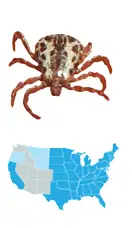
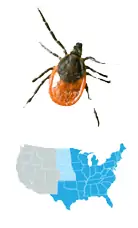
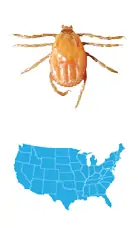
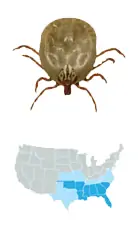
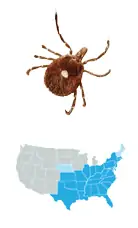
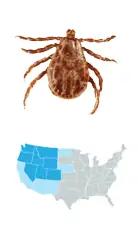


Lyme disease
Babesiosis
Tick-Borne Relapsing Fever (TBRF)
Rickettsiosis
Ehrlichiosis
Anaplasmosis
Tularemia
Powassan
STARI
Heartland Virus
Colorado Tick Fever
American Dog Tick
Dermacentor variabilis


- Rickettsiosis
- Tularemia
Eastern Blacklegged Tick
Ixodes scapularis


- Lyme disease
- Babesiosis
- Tick-Borne Relapsing Fever (TBRF)
- Rickettsiosis
- Ehrlichiosis
- Anaplasmosis
- Powassan
Brown Dog Tick
Rhipicephalus Sanguineus


- Babesiosis
- Rickettsiosis
- Ehrlichiosis
Gulf Coast Tick
Amblyomma maculatum


- Babesiosis
Lone Star Tick
Amblyomma americanum
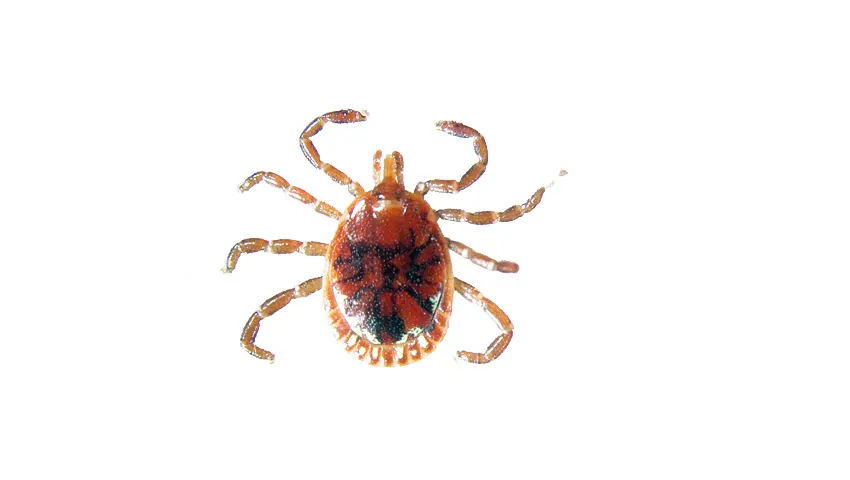

- Ehrlichiosis
- Tularemia
- STARI
- Heartland Virus
Rocky Mountain Wood Tick
Dermacentor andersoni


- Rickettsiosis
- Tularemia
- Colorado Tick Fever
Western Blacklegged Tick
Ixodes pacificus


- Lyme disease
- Babesiosis
- Tick-Borne Relapsing Fever (TBRF)
- Rickettsiosis
- Ehrlichiosis
- Anaplasmosis
- Powassan
Soft Ticks
Ornithodoros


- Tick-Borne Relapsing Fever (TBRF)
GET TESTED
If you believe you have been bitten by a tick and no longer have the tick for testing, use a collection kit for testing a sample. Choose between a Blood, Urine, or Miscellaneous kit.
TICK TESTING FAQs
Ticks, like many organisms, undergo various life stages, including egg, larva, nymph, and adult. The age of a tick can be important in certain contexts, especially when considering disease transmission or testing for diseases such as Lyme disease. Ticks are most commonly tested in the nymph or adult stages, as these are the stages at which they are most likely to transmit diseases to humans.
In terms of testing, it’s not necessarily about the age of the tick but rather its life stage. Nymphs and adults are more likely to carry and transmit diseases than larvae. Testing older ticks, particularly nymphs and adults, is generally more relevant for disease surveillance.
If you have been bitten, sending a tick in for testing to detect Lyme and other tick-borne diseases is essential in correctly diagnosing and treating possible infections. Even if you are not showing symptoms, it is advised that you find a Lyme-literate doctor to test for tick-borne diseases.
When you send a tick in for testing, IGeneX does not ‘type’ or determine the species of the tick. The tick will not be sent back after testing. Contact your local Vector Control Center for further information about the ticks in your area.
Use the chart above to help identify the type of tick you were bitten by. Additionally, in the event of a tick bite, learn more with the following resources:
To send a tick in for testing, place the tick inside a sealed container. A tube or sealable plastic bag will keep the tick safe in transit. The tick(s) can be alive or dead for testing. Up to 20 ticks may be sent at one time. DO NOT ‘preserve’ the tick.
Mail your tick using the address on the tick test request form via FedEx, UPS, or US Mail.


